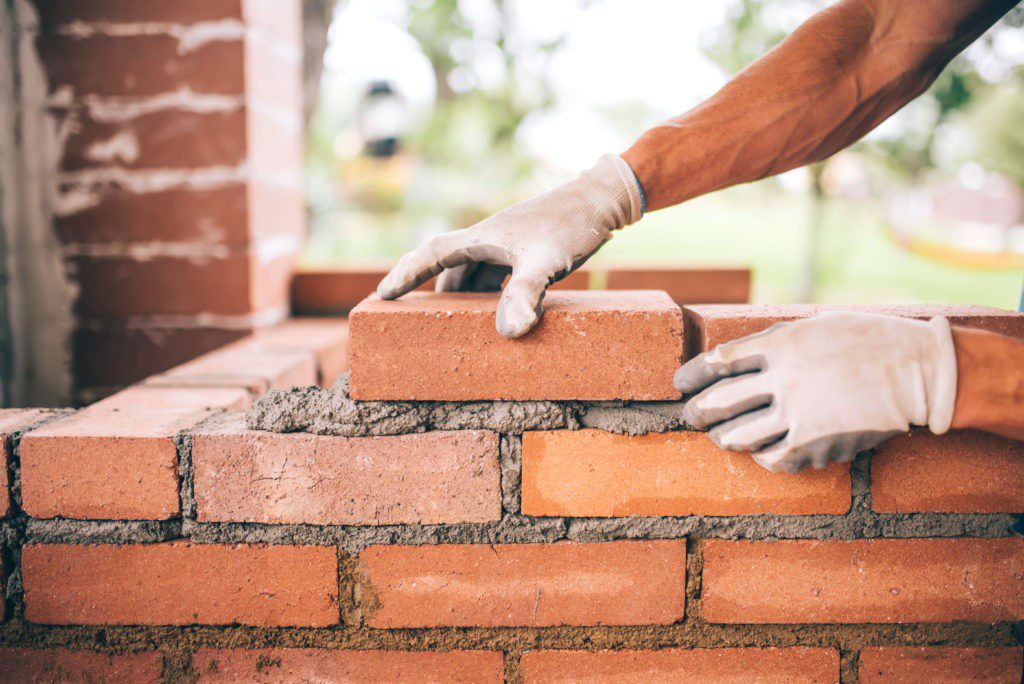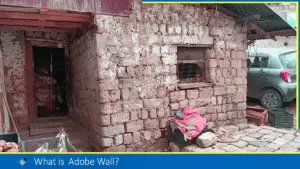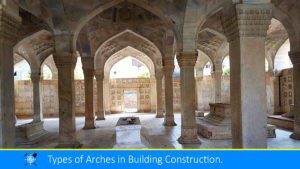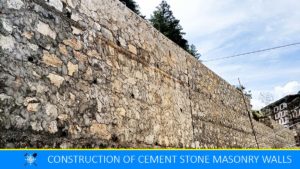Brick and stone are two of the most popular choices for building exterior walls, but which one should you choose? Here’s a look at their advantages and disadvantages to help you decide between brick masonry and stone masonry. Which one do you prefer?
Brick Masonry
Since bricks are produced in large quantities, they’re much cheaper than stone and other natural materials, making brick masonry relatively affordable for homeowners. However, brick construction work is not appropriate for all projects; it cannot be used on facades or arches because of its heavy weight, and special mortars are required to keep brick walls from falling apart over time.
The brick masonry technique is a popular, time-tested option for building home walls and foundations. The basic technique involves stacking bricks perpendicular to each other in straight or crisscross patterns until all available space is filled, usually with mortar to bind each individual unit together. Then, exterior materials such as stucco or drywall are applied for aesthetics and weather protection.

Also, read: Types of Bricks Used in Building Construction: 6 Types of Bricks
Advantages of Brick Masonry
The sturdiness of brickworks makes it an attractive choice for homes, restaurants, stores and schools in both urban and rural areas. Brick buildings are longer lasting than structures made from wood or other materials, providing their owners with a sense of longevity that cannot be matched by less sturdy materials. In addition to its sturdiness, brickwork is inexpensive when compared to stone masonry; however, brick houses require greater skill to construct than homes made of stone and mortar.
The bricks must be cut into shapes that fit together perfectly or else they could easily fall apart during construction (or afterwards). Despite these challenges, brick remains a popular material choice for commercial properties because it can endure more wear and tear than many other building materials without succumbing to damage or demolition.
Disadvantages of Brick Masonry
The main disadvantage of brick masonry is that it does not last as long as stone masonry and can quickly deteriorate. Bricks are made from relatively soft clay, and cannot stand up to repeated freeze/thaw cycles that occur in regions where snow and ice are frequent features of winter weather; they will begin cracking and crumbling under these conditions.
Stone Masonry
When you want to create a beautiful building with a strong and durable exterior, you turn to stone masonry. This technique has been used since antiquity and is still widely employed around the world today because of its excellent resistance to impacts, fire, heat, water damage and other types of deterioration that might befall other materials in your home or business structure.

Also, read: Types of Stone Masonry Works | Rubble Masonry
Advantages of Stone Masonry
Although brick masonry has similar advantages to stone masonry, there are distinct advantages to using stone. One of the most notable advantages is the sturdiness of the structure. Unlike brick masonry, stone does not necessitate the use of mortar to hold the stones in place, as it can weaken the wall. Rather, stonemasons use specialized tools to shape and position the stones in the structure, with the stones being held together solely by their weight and the force of gravity.
Disadvantages of Stone Masonry
While stone is a great material to use for most masonry projects, it does have its downsides. Durability: Because of the stone’s hardness, it is much less durable than brick masonry. While brick will stand up well to most weather conditions, including a few hard touches of frost in winter and extreme heat in summer, stones are more brittle and may crack or chip when hit by something hard.
Other Important Facts About Brick & Stone
Compared to stone, brick is a cheaper alternative, albeit less visually appealing and with a shorter lifespan of approximately 50 years. However, both materials possess a reasonable level of durability.
Comparison of Brick Masonry and Stone Masonry
The following table is one to a comparison between brick and stone masonry for the better choice of the materials to be used in construction: –
| SL.No. | Topic | Brick Masonry | Stone Masonry |
|---|---|---|---|
| 1. | Shape and Size | Bricks possess a consistent shape and are available in a standard size. The modular size of red bricks measures 190X90X90mm, while the standard size is 200X10X10mm. | Stones typically have an irregular shape in their natural state unless they have been dressed. They are available in various sizes. |
| 2. | Duriability | Reasonably durable. | Durable and long-lasting. |
| 3. | Availability | Bricks are conveniently accessible in various sizes and shapes in nearby towns. | It is more challenging to locate usable stones. |
| 4. | Dressing | Bricks do not require any dressing. | The dressing is necessary for stonework. |
| 5 | Workability | Bricks are known for their excellent workability with any type of mortar. | Stones are available in irregular shapes and require significant manual labour to dress them. |
| 6. | Strength | Bricks typically have a compressive strength ranging from 100 kN/m2 to 200 kN/m2. However, it’s important to note that compressive strength can vary depending on the specific type and quality of the brick. | This type of masonry is stronger than brick masonry with the same wall thickness. |
| 7. | Mortar Joint | Brickwork requires less mortar due to the use of thin mortar joints. | Compared to brickwork, stonework typically requires thicker mortar joints due to its irregular shape and size. |
| 8. | Weight | Bricks are lighter in weight compared to stone, resulting in brick walls having a much lower dead load than stone walls. | Stones are heavy, and as a result, the dead load of a stone masonry wall is greater. |
| 9. | Fire Resistant | Brickwork is known for its excellent fire-resistant properties. | Stone walls generally provide greater fire resistance compared to brick walls. |
| 10. | Appearance | Providing pointing gives a good appearance to the surface. | Stonework can provide a better architectural effect. |
| 11. | Maintenance | Requires plastering and periodic maintenance. | Exterior plastering is not required. Maintenance is cheap. |
| 12. | Cost | Bricks are readily accessible, and brickwork is a cost-effective option. | Although stones are available, working with them is a more expensive option. |
In Conclusion, Which One Is Better?
There are various types of masonry works, including brick and stone, which are suitable for landscaping. Therefore, you will need to determine your priorities when making a selection. Do you prefer a lighter type of masonry that is easier to install, or would you rather use heavier stones? Are aesthetics more important to you, or do you prioritize durability and strength?
FAQs:
Q: What is the difference between brick masonry and stone masonry?
A: Brick masonry uses bricks as the building material, while stone masonry uses stones. Brick masonry is generally easier and quicker to install than stone masonry, but stone works offer greater durability and strength.
Q: Can brick and stone be used together in masonry works?
A: Yes, brick and stone can be used together in masonry works, and it can create an interesting visual effect. However, it’s important to ensure that the two materials are compatible and that the masonry work is structurally sound.
Q: What are the advantages of stone masonry?
A: It provides greater durability and strength compared to brick masonry. It also offers a unique aesthetic appeal and can enhance the architectural design of a building.
Q: What are the advantages of brick masonry?
A: It offers several advantages, including fire resistance, good workability, and availability in various sizes and shapes.
Q: What is the lifespan of brick and stone masonry?
A: Both brick and stone work have a long lifespan and can last for several decades with proper maintenance and care.
Q: What is the cost difference between brick and stone masonry?
A: Stone masonry is generally more expensive than brick masonry due to the cost of the material and the labour involved in cutting and dressing the stones. However, the cost can vary depending on the specific project requirements.
![]()







